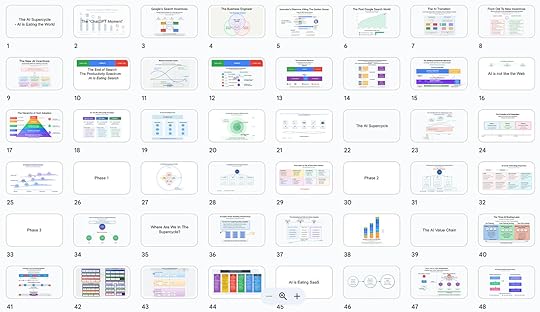The Birth of The AI Super Platform
We are living through a paradigm shift of unprecedented magnitude.
The rise of AI super platforms represents not just another technology evolution but the convergence of all previous web paradigms into a single, unified conversational interface.
The Great AI Convergence is more than just ChatGPT overtaking X.com in traffic. It’s the emergence of a new digital order where browsing, searching, social media, gaming, and streaming are all absorbed and expanded into a unified super-platform that fundamentally changes how humans interact with digital interfaces.

AI Is Eating The World Workshop
 The Old Web Paradigms: A Fragmented Digital Landscape
The Old Web Paradigms: A Fragmented Digital LandscapeFor over three decades, the web evolved through distinct, separate paradigms, each serving specific human needs:
Web Browsing (1990s)The original web paradigm focused on document retrieval and navigation. Users learned to click through hyperlinks, bookmark pages, and navigate hierarchical information structures. Browsing was primarily passive consumption of static content.
Search (2000s)Google revolutionized information discovery by making the entire web searchable. The search paradigm trained users to think in keywords, optimize queries, and sift through ranked results. It transformed the web from a browsing experience to a discovery engine.
Social Media (2000s-2010s)Platforms like Facebook, Twitter, and Instagram created new paradigms around social interaction, content sharing, and network effects. Users learned to curate personas, engage with feeds, and participate in social networks.
Gaming (1970s-Present)Digital gaming evolved from simple arcade games to complex virtual worlds, creating paradigms around interactive entertainment, achievement systems, and immersive experiences.
Streaming (2010s)Netflix, YouTube, and Spotify established paradigms around on-demand content consumption, algorithmic recommendations, and personalized entertainment feeds.
The Fundamental Problems with Paradigm FragmentationThis evolution created a digital landscape characterized by significant inefficiencies:
Context Switching Fatigue: Users constantly jump between applications, losing context and momentum with each transition.Cognitive Overhead: Each platform requires learning different interfaces, interaction patterns, and mental models.Data Silos: Information remains trapped within individual platforms, preventing seamless cross-platform experiences.Specialized Interfaces: Every paradigm developed its own interaction vocabulary, creating barriers to unified experiences.Fragmented Attention: Users split their attention across multiple platforms, reducing deep engagement with any single experience.Limited Cross-Paradigm Value: Productivity insights couldn’t easily enhance entertainment experiences, and social interactions remained separate from work contexts.The AI Super Platform: The Ultimate Convergence

The post The Birth of The AI Super Platform appeared first on FourWeekMBA.



